Progress has been slow again this last week, mostly due to me coming down with man flu. However I have finished a surprising amount off considering how bad I’ve felt.
I spoke last time about expanding my forces and expand I did!
Working first on my evil forces, as stated before I rebased and touched up ten Bog Roll Wraiths:

From there I went looking for easy conversions for another elite evil unit to go alongside my Sauracens.
On a whim I picked up a bag of skull beads, hoping they’d be roughly the right size. Turns out they were, but not in the undead skull sort of way, but in the skull shaped helmet kind of way.

Instead of pinning the beads in place, I simply clipped the heads of the figures down to a post and then shoved the bead on, popping a bit of superglue in the hole on the top to permanently fix it in place.

I then added masking tape cleavers to make their weapons look more intimidating. Making tape works well for this sort of thing if you cover it in superglue. It feels like thin plastic afterwards, it has flexibility but is still strong.

Yes, the one in the middle is carrying a flamethrower. I just chopped down a crossbow and added a tank on his back make from sprue. The huge axe is also masking tape.
For the good guys I got my previously mentioned Handgunners painted:
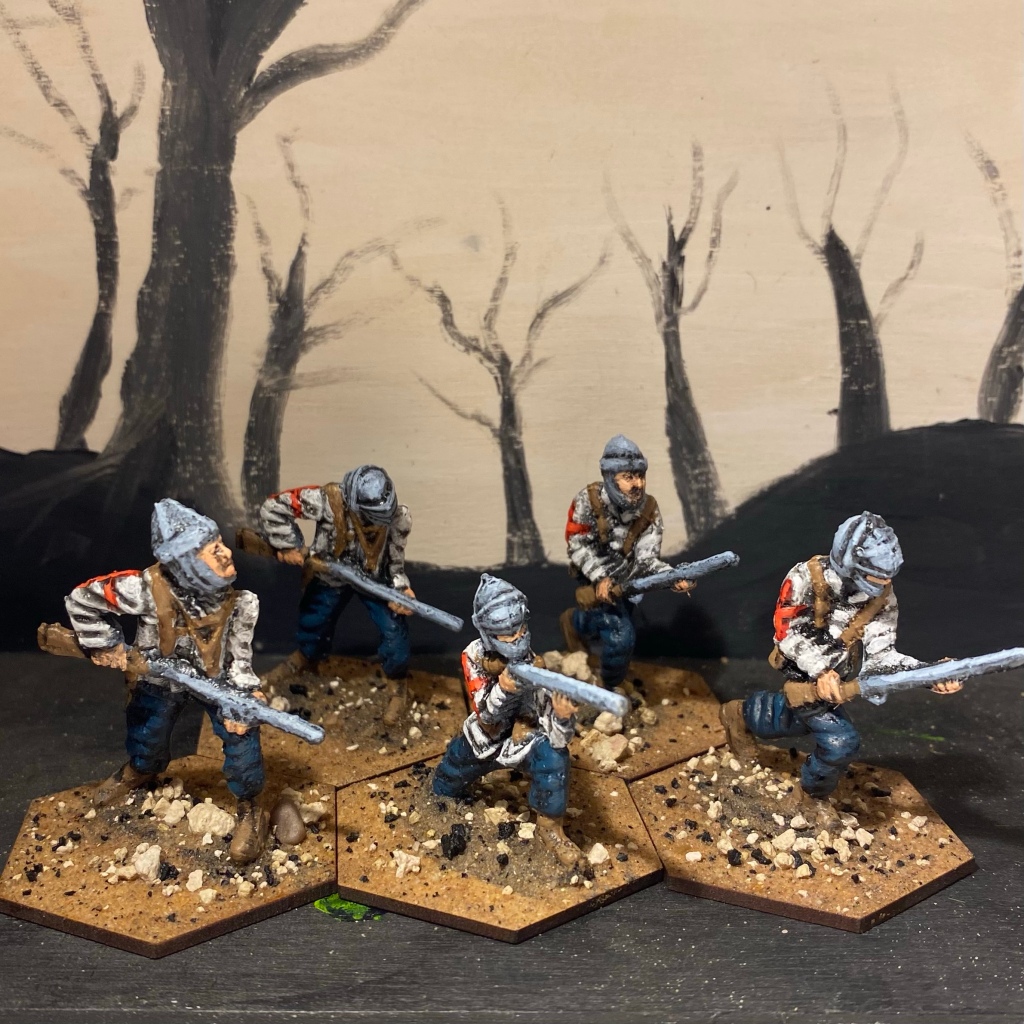
I then quickly added some plate armoured super Templars:

My initial game went roughly as follows, the rules started to struggle a little with forces this big.


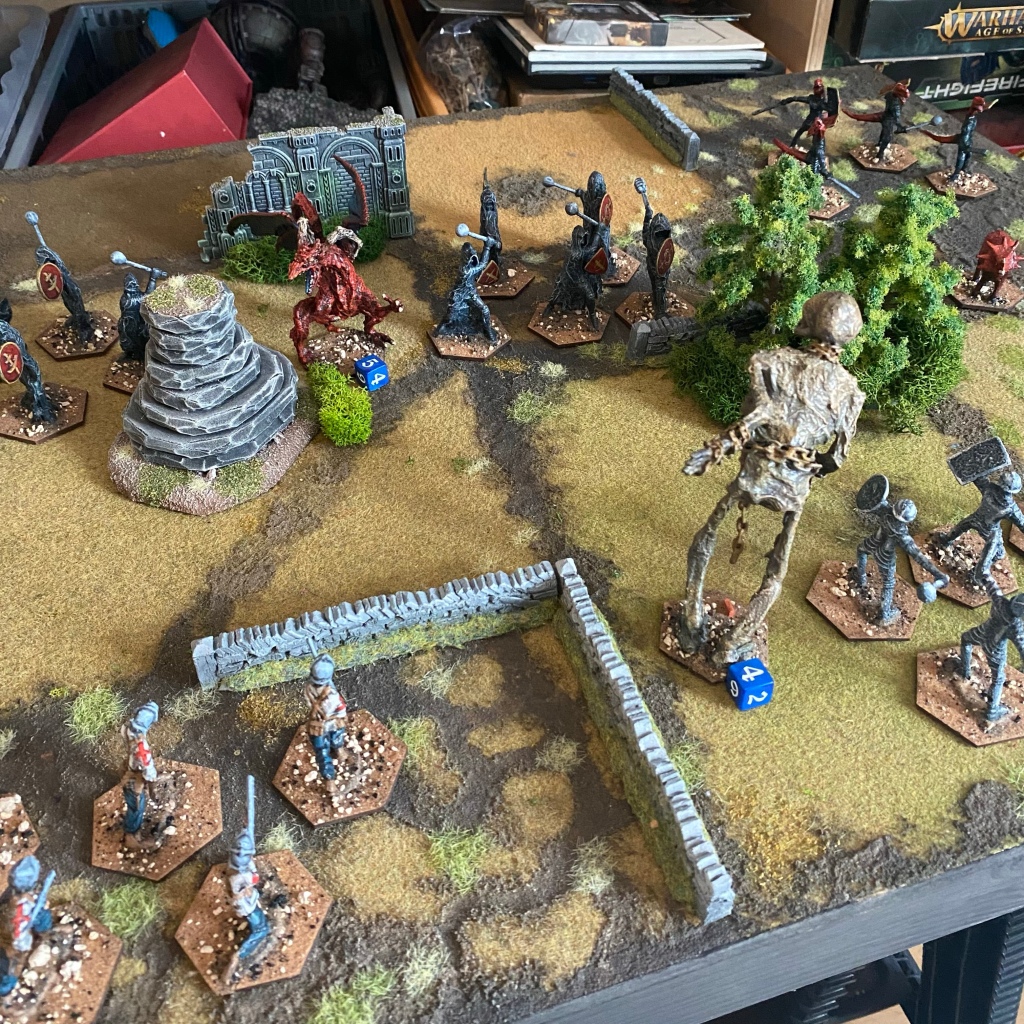




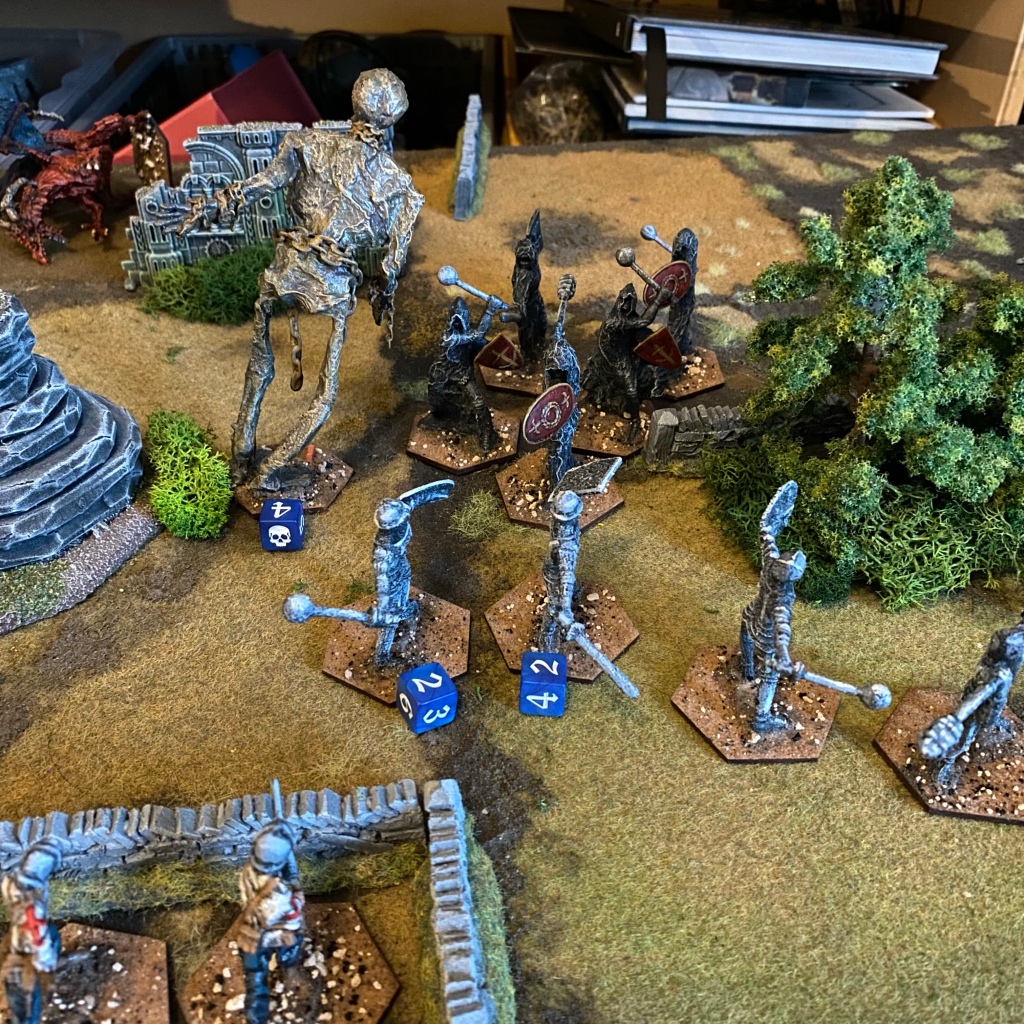


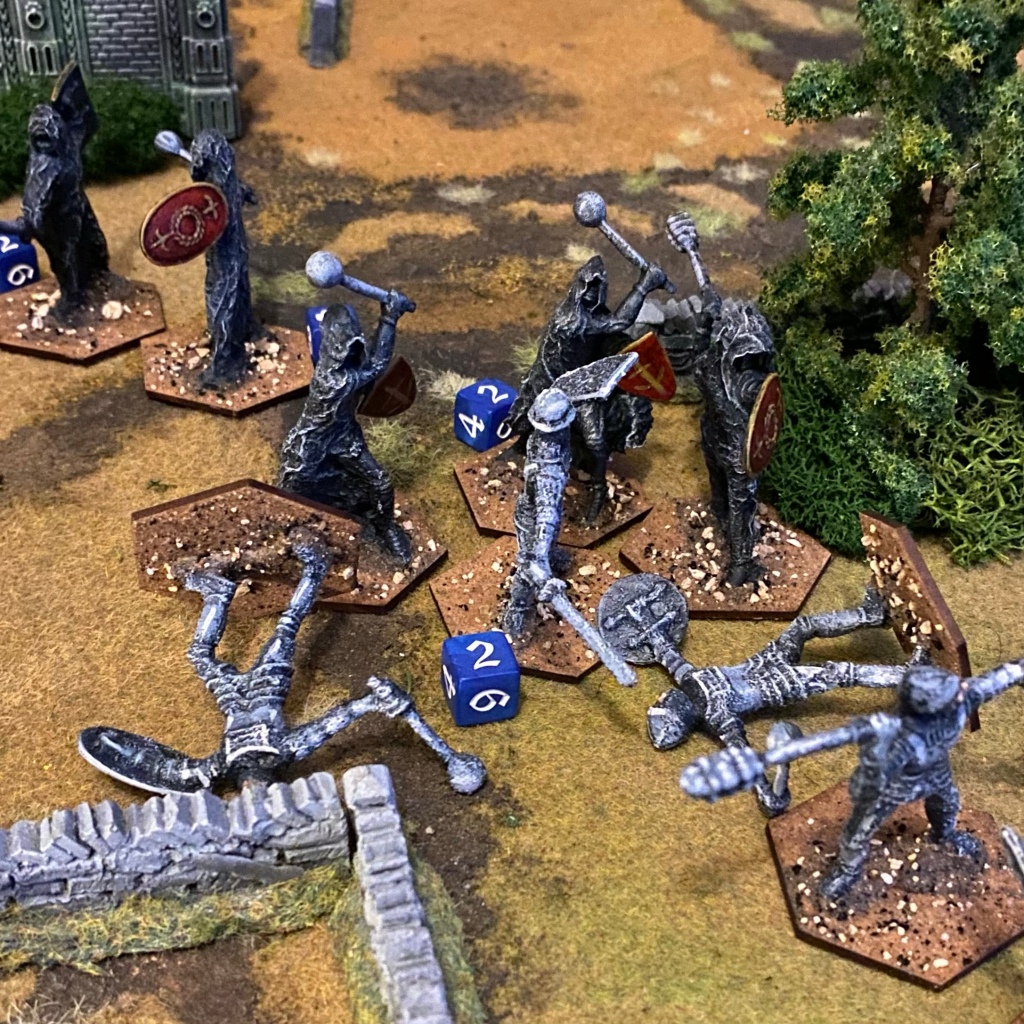
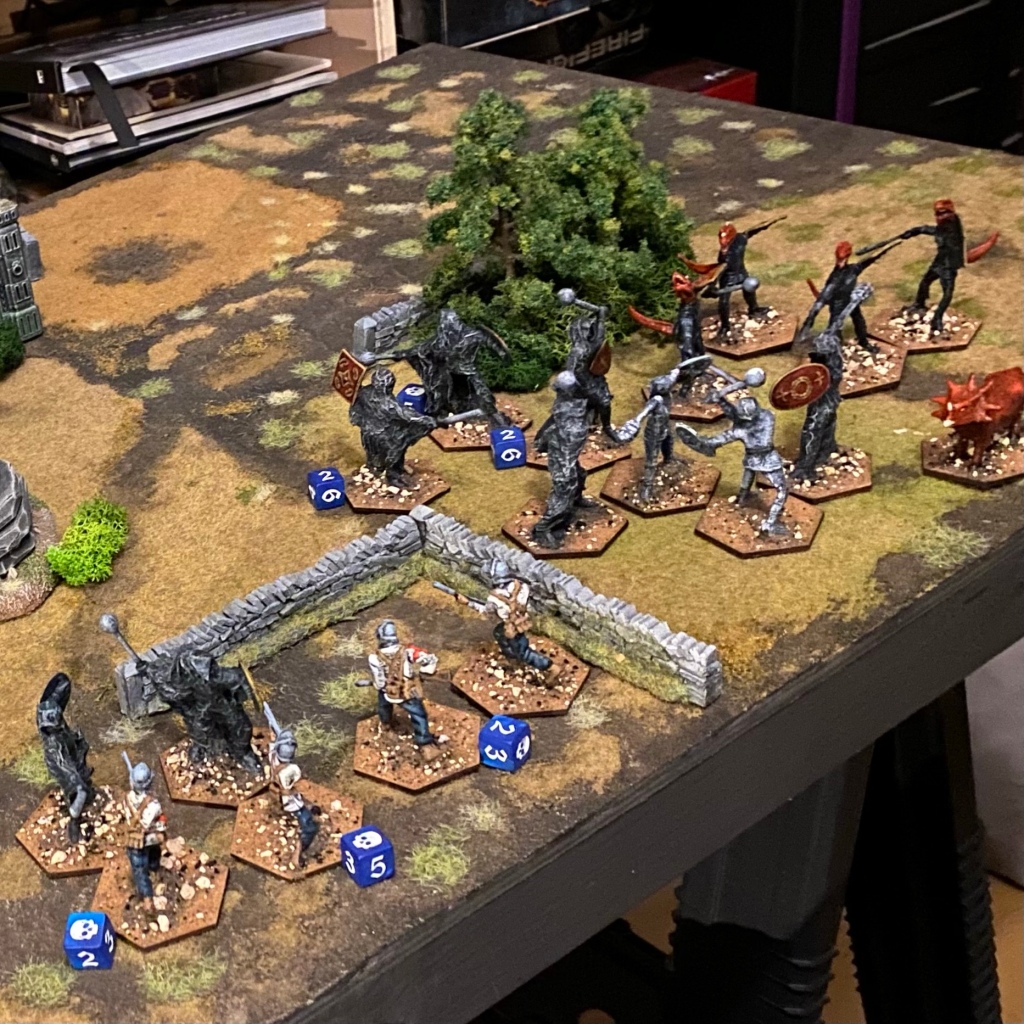
The core system worked well enough, the Featherstonian turn order of:
a) First side moves (possible melee).
b) Other side shoots.
c) First side shoots.
d) Other side moves (possible melee).
It keeps things quick, and allows for a surprising amount of depth.
It was combat where things began to get clunky. With forces this large playing out each combat individually took a little more time than felt fun, so I might have to switch to a unit on unit combat system rather than individuals duking it out.
It’s been fun playing with my Knights. Considering they were only £3 from a local discount shop.
Most of my games involve a few hundred figures a side. For playing with both unit and individual characteristics I find that Warhammer and Chainmail rules or a simplified derivation works fairly well. Those that charge in go first and in subsequent moves it is down to dominant initiatives – those that are fastest. Vampires generally are fastest , followed by elves and characters with zombies least so. My ‘Viking class’ are usually faster and with better weapon skill than more heavily armored troops but the more heavily armored (such as plate armored knights) have better survivability. Each troop class needs a particular dice roll to kill the enemy in combat with. (I consult a table). I allow overlap of one on each row of troops and also two ranks with three ranks for pikemen and possibly spearmen. Characters have multiple attacks and wounds and as they lose wounds they lose attacks. Two handed weapons like Great axes and swords get a bonus. I also add rank bonus and flag and munician bonus for combat resolution, That means that a mortal unit can still win against n ethereal one even though it can’t be harmed with conventional weapons) Characters have to be in the front rank to battle and when melees are not in process may leave the units on their own errands or to join other units. When one side has a win in a round of melee it pushes the other side back 20 cm or 10CM if another unit, friendly to the pushed back unit is behind it – this also pushes back the friendly unit. Units pushed off the board are out of the battle, When a unit gets to less than half strength a morale dice is rolled and if the eladership fails it loses the melee. it is then forced to flee until morale is again passed OR, alternatively, such units might be removed from the game.
It’s one of the interesting parts about rule writing, at what stage to you switch from individual to unit 🙂
The inbetween is where your unit rolls a dice per individual and inflicts any damage on the enemy unit, removing that number of individuals